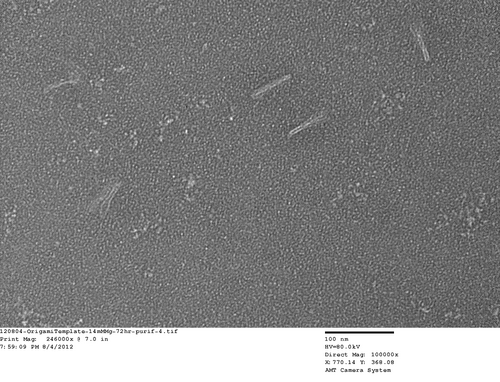Biomod/2012/Harvard/BioDesign/DNA origami
<html>
<head>
<link href='http://fonts.googleapis.com/css?family=Open+Sans' rel='stylesheet' type='text/css'>
</head>
<style>
/*BUT ACTUALLY*/ body {
font-family: 'Open Sans', sans-serif; overflow-y: scroll;
}
.container {
background-color: #ffffff; margin-top:0px
} .OWWNBcpCurrentDateFilled { display: none; }
h5 {
font-family: 'Open Sans', sans-serif; font-size: 11px; font-style: normal; text-align: center; margin:0px; padding:0px;
}
- column-content
{
width: 0px; float: left; margin: 0 0 0 0; padding: 0;
} .firstHeading {
display:none; width:0px;
}
- column-one
{
display:none; width:0px; background-color: #ffffff;
}
- globalWrapper
{
width: 900px; background-color: #ffffff; margin-left: auto; margin-right: auto
}
- content
{
margin: 0 0 0 0; align: center; padding: 12px 12px 12px 12px; width: 876px; background-color: #ffffff; border: 0;
}
- bodyContent
{
width: 850px; align: center; background-color: #fffffff;
}
- column-content
{
width: 900px; background-color: #ffffff;
}
- footer
{
position: center; width: 900px;
} @media screen {
body { background: #000000 0 0 no-repeat; /* changed default background */ }
}
- menu
{
position: fixed; float: left; width: 180px; padding: 10px; background-color: #FFFFFF;
}
- pagecontent
{
float: right; width: 620px; margin-left: 300px; min-height: 400px
}
- toc { display: none; }
/*Expanding list*/ ul { list-style: none; }
- exp li ul { display: none; }
- exp li:hover ul { display: block; }
- exp li a:active ul { display: block; }
a:link {color:#FF6060;} a:visited {color:#FF6060;} /* visited link */ a:hover {color:#B24343;} /* mouse over link */ a:active {color:#B24343; } /* selected link */
</style> </html>
DNA Origami
Rationale of Approach
DNA Origami is a technique for creating large 3D D-DNA structures using a long viral DNA strand and smaller staple strands to hold it into a defined shape. We used a DNA origami structure developed by Dr. William Shih as shown below. We modified the staple strands on one face of the structure to contain handles sticking out from the face, similar to the strategy used for the SST canvases. DNA origami seemed to be a good approach as origami has been explored more and the 3D nature of the structure will sterically bias the handles to stick out of the face. The strategy for the attachment of the L-DNA strands on top is the same as that which used for the SST canvases, with alternating rows of L-DNA containing the complementary handle to bind to the origami structure (see L-DNA Layer Approach for more details on attachment.

Observation of Structure
We used TEM to see if the structure itself would form. The structure seem to bias landing on their ends (on their helices, which is why we see a sliver of the structure.

A wider field showing a zoomed out field.

A zoom in of the DNA Origami structure.

A final image of another area of our sample
Unfortunately, we ran into a dilution issue after purification to add the L-DNA strands. Because we were seeing promising results with the Large Canvas SST technique, we did not purse DNA origami to completion and have certainly not ruled out origami as a possible template.
| << Large SST Canvas | Small SST Canvas >> |